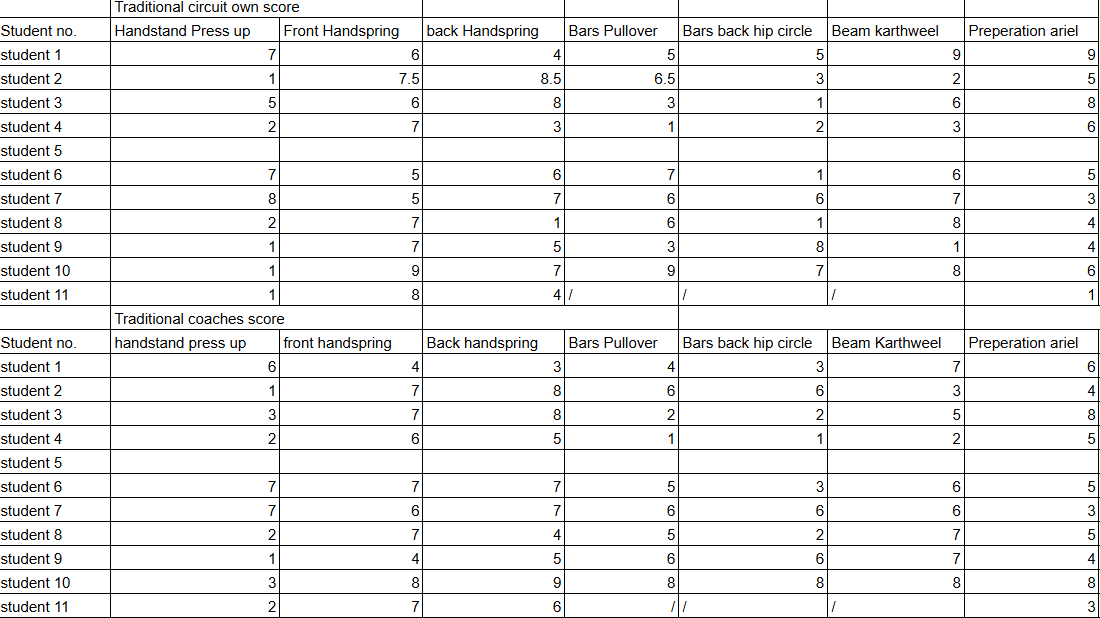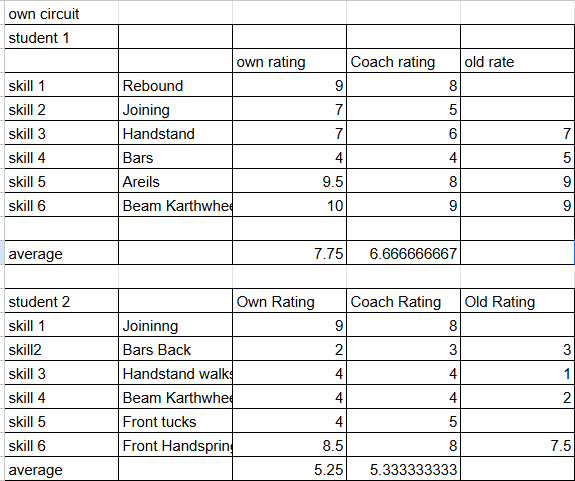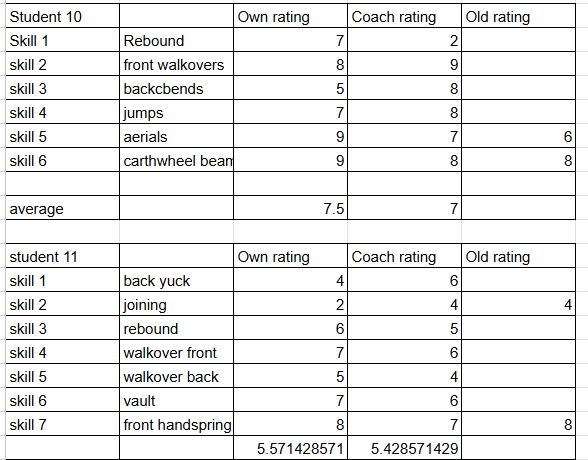Task related to theory:
1. Actualizing Tendency: On Day 2, I gave students the autonomy to design their own circuits, tapping into their intrinsic motivation to improve their skills. This mirrors the actualizing tendency, as students naturally sought out exercises that challenged them or aligned with their personal goals. By focusing on skills they wanted to improve, students demonstrated a natural inclination toward self-betterment and growth.
2. Unconditional Positive Regard: During the individual discussions, I displayed unconditional positive regard by listening to each student’s ideas and incorporating their preferences into the personalized circuits. This acceptance encouraged students to take creative risks and participate fully, knowing their contributions were valued without criticism.
3. Empathy: My one-on-one discussions with students allowed me to empathize with their specific needs and preferences. For instance, understanding why a student chose a particular skill or how they felt about the traditional circuit enabled me to tailor their experience. By adapting exercises to their comfort and goals, I demonstrated empathetic teaching, which likely contributed to their improved motivation and performance.
4. Authenticity: By allowing students to create and perform circuits that reflected their interests and strengths, I encouraged them to express their authentic selves. This authenticity was evident in students' "twists" on exercises, which showcased their individuality and creative engagement with the task.
5. Valuing Process: On Day 2, students evaluated which skills they needed or wanted to work on and prioritized these in their personalized circuits. This process of self-assessment and alignment with personal goals directly reflected the organismic valuing process.
6. Conditional vs. Unconditional Regard: The traditional circuit on Day 1 could be seen as a form of conditional regard, as all students were expected to conform to a single standard regardless of their individual needs. This led to mixed reactions, such as distress or disengagement. In contrast, Day 2's personalised approach removed these conditions, allowing students to engage authentically with tasks that aligned with their self-concept, thereby fostering better psychological and performance outcomes.
Person-Centered Personality Theory:
Carl Rogers' Person-Centered Personality Theory, which is part of the humanistic approach, highlights the innate drive within humans, called the actualizing tendency, which motivates personal growth and self-fulfillment. According to Rogers, supportive environments that provide unconditional positive regard, empathy, and authenticity are essential for fostering this growth and promoting psychological well-being. Humans naturally evaluate their experiences through the valuing process, by aligning their actions with their intrinsic needs. However, conditional regard, acceptance based on meeting specific expectations, can lead to distortions in self-concept and hinder development. A fully functioning individual, as described by Rogers, lives authentically, remains open to experiences, and performs better across life domains by staying true to their inner values.
My perspective on how this worked:
The first day we did our traditional task where I group each student's needs into one circuit and every one completes this circuit 3 times. Some find it challenging and some may find it easy. In each stage the students had various feelings either distressed and panicked and some wanting to do more, or something different because they don't enjoy it. The second day they all came in with bright and different ideas, some things we have never tried. We had a small discussion individually and we placed a small circuit together, to execute every circuit altogether, it was very challenging but we made it work that everyone could work comfortably in the circuit, we adapted some things, i immediately noticed that most of them where more motivated and their performance improved on the skills that they needed to work hard on, some comments i heard from students that they had chosen the skill that they wanted to perform, slightly different (adding her own twist after it) making it more fun. They all had a good reaction and kept telling me that they prefer it this way as they felt they were working harder.
Task based on theory:
Day 1:
1. Create a circuit to execute for all students
2. This is the traditional
3. Ask the students to think about a 6 part circuit that they want to do in class, their perfect circuit
4. Ask them to rate themselves
Day 2:
1. Create an individual circuit for each student,
2. Bring their own ideas for their circuit and have a discussion with each student individually to join each circuit
3. Execute each circuit at the same time.
In class discussion:
What did you think about this exercise?
Very fun, very nice. Since you have your own circuit, take much less breaks, more tiring
Focus more on the things you are weak in. i liked it more, it's fun. As well you work where you need and the exercises and skills that you need. Everyone has their own personalised set.
Would you prefer having this session for future use?
Yess, it is very helpful, it is faster and have corrections of everything
Did you like that I told you to think about the exercises that you wanted to do or should i just do it myself?
Yes, it wasn't that heart breaking, I had something to look forward to.
What skills did you like the most in your circuit?
Most of them answered with the ones they created.
How did you understand this assignment?
We did a circuit and we compared them to yours, to get a better cycle and view of why you gave us these skill sets, more motivation because you were explaining exactly why and how this will make me improve. We knew what you thought about our skill level and how we think about our skill level.





